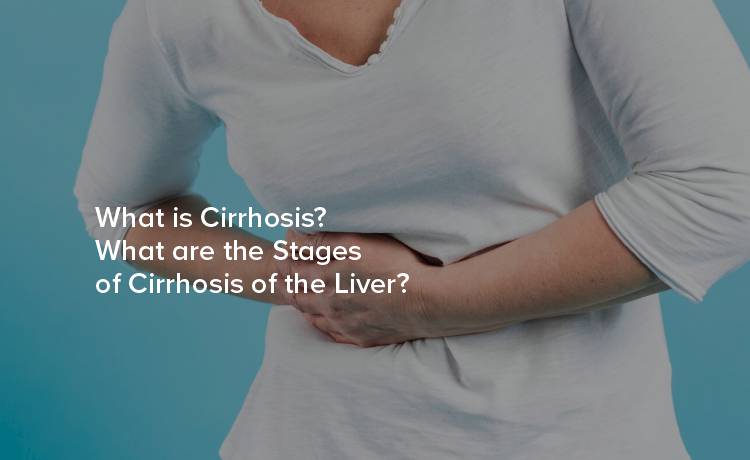
The liver, a resilient organ, often guards its secrets well behind a guarded fortress of ribs and tissue. Yet, when it cries out in the form of cirrhosis, the damage it contains can no longer be ignored. This chronic liver disease, often insidious in onset, deserves a narrative that unravels its complexity to the public's eye.
Cirrhosis, at its core, is a disease characterized by scarring of the liver tissue. This essential organ, known for its multifaceted roles in digestion, metabolism, and detoxification, becomes increasingly dysfunctional as scar tissue replaces healthy cells. Alcohol abuse, chronic hepatitis B and C, and non-alcoholic fatty liver disease (NAFLD) are potent instigators of this stealthy assailant.
But why does it matter? Cirrhosis is a leading cause of liver-related mortality, often escalating to liver failure or hepatocellular carcinoma, the most common form of liver cancer. It is a disease that doesn't discriminate—it affects people of all ages and backgrounds, underscoring the importance of awareness and early intervention.
Cirrhosis is not a uniform body blow; it progresses through distinct stages, each with its challenges and implications. The four commonly recognized stages are:
In the initial phase, the liver damage is mild, and the organ can still perform its vital functions without exhibiting severe symptoms. However, this stage is the red flag, a sign that intervention and lifestyle changes are urgent, as the liver's capacity to regenerate is eventually outpaced by the proliferation of scar tissue.
The second stage sees the onset of portal hypertension, a condition where the blood pressure in the portal vein—the vein that carries blood from the intestines, spleen, and pancreas to the liver—rises significantly. This leads to the development of esophageal varices, swollen veins in the lower part of the esophagus, which can rupture, causing life-threatening bleeding.
As cirrhosis progresses, the fluid that once was held in your blood vessels now leaks out into your abdomen, leading to ascites. This fluid buildup not only causes discomfort but also acts as a warning that your liver is further struggling to maintain the body's balance.
At the advanced stage, liver function is severely compromised. One of the most concerning complications is hepatic encephalopathy, where the liver's inability to detoxify the blood results in a toxic build-up, leading to cognitive issues ranging from forgetfulness to confusion and, in severe cases, coma. Additionally, the risk of liver cancer, notably hepatocellular carcinoma, significantly increases in this stage.
The diagnosis of cirrhosis is not a terminal sentence, but a crossroads where lifestyle choices play a vital role in determining the patient's trajectory. Abstinence from alcohol, maintaining a healthy weight, and adherence to prescribed medications are pivotal. Hepatologists, gastroenterologists, and nutritionists become the navigators of this new and challenging healthcare voyage, while family and social support are the wind in the patient's sails.
Drug therapy for cirrhosis focuses on managing symptoms and addressing underlying causes. While there's no medication that can reverse cirrhosis, specific treatments, such as antivirals for viral hepatitis or corticosteroids to reduce liver inflammation, slow its progression.
Patients with cirrhosis often require tailored dietary plans to manage complications like ascites and malnutrition. A low-sodium diet, rich in protein and moderate fat, can help alleviate symptoms and support liver health.
For some, a liver transplant might be the only viable treatment option. Procuring donor organs, navigating the transplant process, and the post-transplant care are areas where having a knowledgeable healthcare team and access to support groups can be invaluable.
Understanding one's emotions and communicating about the challenges cirrhosis presents is often as crucial as adherence to medical regimens. Anxiety, guilt, and depression can be pervasive, not only for the patient but for their caregivers and support network as well.
The role of a caregiver to a loved one with cirrhosis is incredibly demanding. Addressing caregiver burnout, seeking respite care, and maintaining an open dialogue with healthcare providers can alleviate stress and ensure the well-being of all parties involved.
In the digital era, the power of global and local support communities cannot be overstated. There are online forums, in-person support groups, and a myriad of resources available to those affected by cirrhosis, providing a space for shared experiences, advice, and emotional support.
Awareness drives change, and the public's understanding of cirrhosis influences public health policies, funding for research, and the development of support services.
Ongoing research into the causes and treatments of cirrhosis is promising. Breakthroughs in genetic therapy, stem cell research, and artificial liver technology offer hope for the future, potentially redefining the landscape of cirrhosis management.
Education campaigns, screening programs for high-risk populations, and better access to healthcare services are critical components of public health initiatives that aim to curb the escalating rates of cirrhosis and its complications.
Shunning the stigma associated with liver disease—often linked to alcohol abuse—and encouraging open discussions about liver health can result in proactive health-seeking behavior and a more supportive environment for those living with cirrhosis.
The story of cirrhosis, though often fraught with apprehension and challenges, is not singular in its narrative. It is a canvas upon which the patient, their loved ones, and a dedicated healthcare community can paint a picture of resilience, compassion, and hope. For the best liver cirrhosis treatment in Hyderabad, look no further than Citizens Specialty Hospital for expert care and advanced therapies.